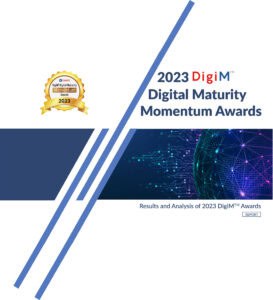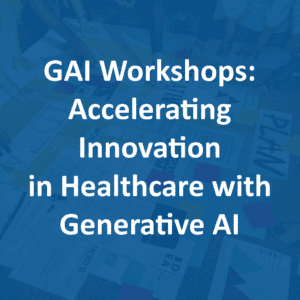
Interoperability between healthcare’s disparate systems seems to be the stickiest of wickets, and a Holy Grail that every soul in the sphere is trying to find. Given the number of conversations about the topic, there’s often little discussed about its actual importance. Perhaps this is an assumed measure or an outcome that should be clearly understood as positive, but every relevant aspect of every story should be covered, not simply assumed. Because far better reporters and publications have done a far better job of describing the interoperability issue and its place in the current healthcare landscape, I decided to ask one question of the community, in an search of a foundational answer to: How is interoperability critical to healthcare innovation?
The prospective provided here, from some of healthcare’s most knowledgeable insiders, offers some interesting insight into a topic that seems more or less overlooked in the larger conversation of achieving interoperability or its capabilities.
Rick Valencia, senior vice president and general manager, Qualcomm Life

Interoperability is the future of healthcare innovation, especially as we move toward an era of connected, team-based care. We need to create platforms and devices that enable the seamless, frictionless flow of data to allow doctors, patients, providers and care teams to collaborate efficiently to make critical care decisions. As care moves from the hospital to the home and more patients are remotely monitored, we need solutions that enable continuous care, informed interventions, and better management of at-risk populations. Without interoperability, we can’t innovate. Without innovation, we can’t improve the health of our nation.
Dave Wessinger, chief technology officer, PointClickCare

Interoperability is critical to innovation in healthcare IT, particularly when it comes to connecting the care delivery ecosystem to provide safer transitions of care between acute and senior care. While some individuals may require short-term rehabilitative care, others may need home-based care, assisted living or long-term and hospice care. As seniors move through these different stages or between acute care and post-acute care, these transitions pose challenges for healthcare providers. Ideally, all the information that clinicians need to treat the individuals will be available when they arrive at their new destination. However, this is not always the case. Healthcare providers must invest in an infrastructure and emerging technologies, such as electronic health records and mobile communications, which support seamless transitions; interoperability plays a vital role. Compared to single-purpose or “best-of-breed” software solutions, comprehensive platforms can optimize many parts of the business, from enabling better-connected resident care and documentation, to delivering high quality data insights for financial management and risk mitigation. In the end, this will allow for better health outcomes, help reduce unnecessary hospital readmissions, ensure organizations are financially sound and keep healthcare costs down.
Jim Bloedau, CEO and founder, Information Advantage Group
The best medicine is a good conversation. If you treat interoperability as a philosophy rather than a standards-based interaction between computer systems then we change our thinking about what a meaningful and useful conversation is. On the technical side, we start to find ways to compress the time it takes and even eliminate much of the unneeded conversation through the interaction of machines. On the people side, the resulting value frees up time to allow patients and providers to optimize wellness in the most economical way through a streamlined yet more meaningful engagement by both patient and the provider team. Changing the geometry of our conversations to produce wellness rather than just treating an episode of disease is at the core of most patient engagement strategies evolving today.
Brent Gendleman, CEO, 5AM Solutions

In order to reduce healthcare costs, improve health outcomes, and create an environment where innovation and its implementation can thrive, interoperability is critical. Data standards allow information exchange between doctors, patients, insurers and researchers, and that exchange supports interpretation and understanding, which lead to action. Data trapped in closed systems don’t allow us the opportunity to compare apples to apples. We don’t have a good enough way to know what works on a scale that can lead to radical improvements in human health. Interoperability offers us a baseline of consistent data that allows stakeholders —including patients, providers, payers, researchers, and investors — to make decisions that can usher in true innovation. Without that baseline, we find ourselves digitizing processes that don’t work. Interoperability can remove the barriers to learning what truly works. No interoperability means no standards and no exchange, leaving us with no understanding and no change.
Paddy Padmanabhan, CEO, Damo Consulting

Healthcare is going through a massive transformation that is being driven by the need to deliver affordable, high quality care that is centered around the patient experience. Delivering this experience in a way that reduces overall costs and maintains profitability requires significant innovations in care models, such as patient centered medical homes (PCMH), value-based models such Accountable Care Organizations (ACO), and a connected health infrastructure that leverages information technology. In addition, the adoption of advanced analytics drives targeted interventions and a population health management strategy for improved clinical, operational and financial outcomes.
The # 1 challenge in a connected health infrastructure and the adoption of advanced analytics is the interoperability between various information systems, many of which follow their own proprietary standards. Having spent billions of dollars on implementing electronic health record (EHR) systems, healthcare executives are now having to look hard at unlocking the potential of the underlying electronic medical records by developing innovative new care delivery and payment models that will improve outcomes. In fact, it may well be that improved interoperability holds the key to the acceleration of innovation in healthcare today.
David C. Kibbe, MD, MBA, president and CEO, DirectTrust
Interoperable health exchange is key to healthcare innovation because the locks on data stored in organizational silos are all made of silicon. To remove those locks so that movement can occur across different health IT systems is disruptive and liberating; it means that people can ‘make things anew,’ which is the meaning of innovation. People can experiment with new workflows for care coordination; combine information from different sources to gain new insights into care effectiveness; and enable patients and consumers to manage their information as was never possible before.
Adam C. Powell, Ph.D., president, Payer+Provider Syndicate
When data can be accessed in a uniform manner, it is easier to process and display it in a uniform manner. Thus, interoperability can drive all sorts of innovations. The government is driving interoperability through its meaningful use Stage 3 proposal. The proposal has suggested that providers may offer access to their data through an application programming interface (API) defined by the Office of the National Coordinator (ONC) as an alternative to implementing a patient portal. This creates a new channel on which multi-source healthcare applications may be created.
As a result of expanding interoperability, the smartphone may soon become a hub for healthcare data, much in the same way that it has become a hub for financial data through apps, such as Mint and SigFig. These changes will also make life easier for providers, as they will no longer have to focus on providing as much technical support to patients interacting with their portal. Third-party app developers will likely absorb some of the responsibility for providing support, and will also be more likely to have the competencies necessary to design user-friendly interfaces. This in turn will increase the population of patients engaged with apps. As the Meaningful Use Stage 3 additionally considers the collection of patient-generated health data to be a form of patient engagement, these third-party apps may have a bidirectional element to them – both retrieving provider data and uploading patient-generated data from wearable devices. mHealth data will leave the smartphone and enter the EMR as EMR vendors increasingly support this capability. For all of these reasons, it is quite possible that the role of mHealth in the patient/clinician interaction will soon greatly increase. It is up to app developers to rise to the challenge and develop means for keeping health data secure on inherently vulnerable devices.
Eric Rice, chief technology officer, Mach7 Technologies

Innovation is defined in many ways: a new idea, a more effective and improved process or product, creating value or capturing value in a new way. Healthcare organizations today are juggling many demands – providing better patient access and patient care, achieving MU requirements and managing ongoing M&As to name a mere few. In order to achieve these goals and thrive in the current (and often competitive) healthcare landscape, innovation isn’t an option, it’s a requirement. Aging legacy HIT systems have converged with new EMRs, advanced visualization solutions and a diverse assembly of patient data (labs, allergies, images, reports…).
Interoperability is the key ability for these disparate systems to talk to each other, to communicate, share and exchange data in a way that is useful, meaningful and seamless to the end user – be it the clinician, patient, or specialist.
Interoperability is at the core of healthcare innovation today, driving the creation and development of solutions to unite the silos of patient data that exist throughout the enterprise into a single patient record.
Jason Buckner, senior vice president, informatics, The Health Collaborative

The Institute for Healthcare Improvement Triple Aim Initiative is defined by better care for individuals, better health for populations and lower cost. Interoperability is the seamless sharing of healthcare data between disparate sources; it is critical in transforming our healthcare market to achieve the triple aim. Healthcare providers and organizations must agree to share data, and take advantage of standards of healthcare data exchange to measure these three areas of the triple aim. Notification to providers when their patient has a clinical event, or producing a quality measure based on a patients entire care record are excellent examples of innovative uses of data that require interoperability for providers to make decisions. The Office of the National Coordinator has been a key force in providing guidance for ease of sharing healthcare data through standards for data exchange and a 10 year roadmap to interoperability. The old adage of “if you can’t measure it, you can’t manage it” is just as true in healthcare, and interoperability is the starting point to measure better health, better care, and lower cost.
Tony Buda, founder and CEO, Banyan Medical Systems
Traditionally, healthcare IT has been purchased departmentally, with products isolated to one department. To support ease of inter-operability and lower costs, most health systems have opted to move to an enterprise-wide electronic medical record (EMR) system to unify patient data across all departments. EMR systems organize historic patient information and are excellent at documentation, but gaps remain to attaining true interoperability in care delivery.
So, the question remains; how can clinicians deliver better patient care without sacrificing quality in a cost effective manner? The key is through technology inter-operability. It is critical – so that health systems do not revert to disparate tools that are costly to manage and scale and do not truly address patient care.
The adoption of an end-to-end care delivery platform can enable health systems to eliminate the barriers of access, collaboration and coordination across the enterprise to fundamentally change the way they deliver care. This brings together technology tools, regardless of vendor, to deliver the right information in a way that clinicians need it: one portal, monitor or tablet, with EMR data, vitals, PACS, pathology and more. By delivering information in a way that supports sharing of information among clinician teams (to view the same data in REAL TIME) we can use inter-operability to drive richer collaboration and deliver exceptional patient care.
Hank Hikspoors, chief technology officer, T-System

The driving force behind everything we do in healthcare should be improving patient outcomes. Every advancement in healthcare over the past few decades is the result of an innovation that somehow improved an outcome for a patient or group of patients.
In today’s technology-driven healthcare environment, innovation and interoperability have become interdependent. Getting new tools and technologies into the hands of providers where they can positively impact patient outcomes is not possible if the new solution does not work with the legacy solutions already in place at the hospital or facility.
Innovative ideas and solutions need to be easily and seamlessly incorporated into real-world clinical encounters in order to have an impact on patients, and interoperability is what makes this possible. Innovations without interoperability are essentially rendered useless because they have no real-world application and no influence on outcomes. Removing barriers to interoperability will not only drive future innovation, but also ensure that those innovations can be successfully leveraged in order to make a difference in patient’s lives.
Ron Razmi, MD, CEO, Acupera
True innovation in healthcare will stem from a return to the art of medicine and intuition of practitioners – where new patient engagement models and collective thought will solve legacy problems. Technology’s place in this equation is to create infrastructure that fosters the interoperability of disparate data warehouses and scalable architectures for growing clinical communities.
The “industrialization of healthcare” nicely represents this idea – meaning that now, low cost, commoditized technologies, are working behind the scenes to efficiently coordinate previously mundane, error-prone and time-intensive tasks, freeing clinicians to spend more time with patients, marrying technology with the art-form of medicine, to truly power innovations in care delivery. This is particularly important as population health strategies are negotiated and tested and the industry moves to value-based models. None of this may be accomplished without interoperability as the jet fuel to a more industrialized approach to healthcare.
With true interoperability in place, health systems may apply technologies where they are best valued, putting an onus back on doctors to collaborate and problem-solve – increasing their value beyond what it is now, which is often diluted to trial and error practices, due to fee-for-service pressures.
This post was originally posted on: http://electronichealthreporter.com/how-is-interoperability-critical-to-healthcare-innovation/

















